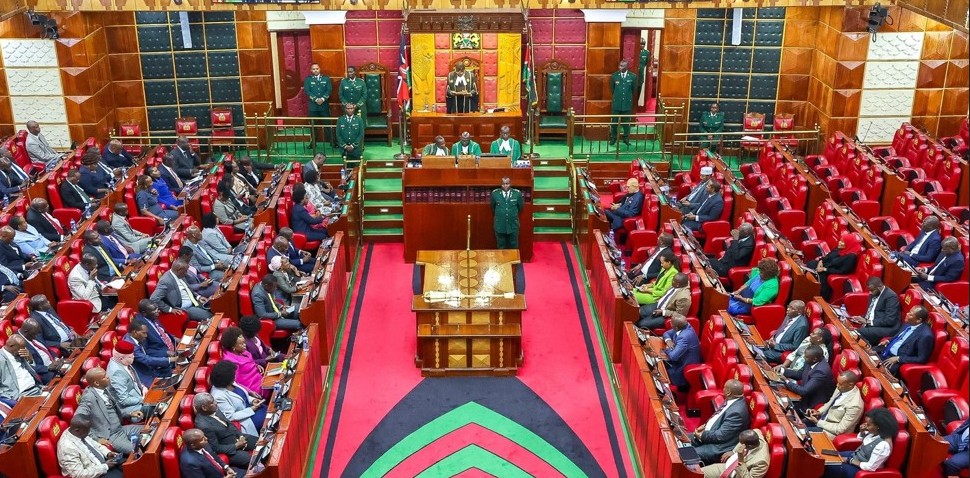Architects want gov't to stop State House renovations citing historic value

The Nairobi State House alone has seen a facelift costing Sh1.7 billion, with Sh775 million spent by September 2024, marking 44 per cent completion of the project.
The Architectural Association of Kenya (AAK) has called on the government to halt any further renovations to the State House, citing concerns that the ongoing alterations are compromising its historical and cultural significance.
In a statement on Monday, AAK President, Architect Florence Nyole, stated that the State House is an architectural masterpiece that should have been listed by the National Museums of Kenya and subjected to public scrutiny before any work is undertaken.
More To Read
- Tough decisions stabilised the economy, saved Kenya from shame – Ruto
- Ruto and Oburu strengthen UDA-ODM alliance after by-election win
- Ruto unveils Sh400 billion mega dam plan to turn North and Coast regions into Kenya's new food basket
- Ruto says 15,000 jobs on the horizon following launch of landmark highway expansion
- Ruto says Kenya can attain first-world status within three decades
- Petition filed to stop multi-billion Rironi–Nakuru–Mau Summit road project
“While renovations are necessary to maintain the structural integrity and aesthetic value of buildings, we are deeply concerned that the current renovations have significantly altered the immense historical and cultural value of the State House,” Nyole said.
According to the Association, the State House, built in 1907 and designed by the renowned British architect Sir Herbert Baker, is a prime example of neo-classical architecture, featuring Doric and Corinthian columns.
Though not officially declared a national monument, the AAK argues that it qualifies as a structure of immense historical importance and should be preserved as a national priority.
Nyole outlined several key changes in the ongoing renovations that deviate from the building’s original design, stating that they undermine the structure’s classic proportions.
These alterations include the replacement of the iconic red roofing tiles, the introduction of a roof parapet that alters the building’s traditional appearance, and the merging of two entrances into a large canopy, which she said disrupts the symmetry of the structure.
“Other significant architectural features, such as the chimneys, are now obscured, and it is unclear whether they have been retained. The alterations diminish the building’s recognition as the State House, as we know it,” Nyole said.
The association also drew comparisons with the demolition of the Uhuru Park Pavilion, which was razed without due consideration for its historical significance. Nyole argued that such actions deny future generations the chance to connect with Kenya’s heritage.
The AAK also referenced international examples, such as the preservation of the National Jubilee Palace in Addis Ababa and Ghana’s Christiansborg Castle, which have been protected as national monuments. They pointed out that globally, historic government buildings are carefully preserved to maintain their architectural and cultural integrity.
“The government should adopt a similar approach, focusing on restoration rather than drastic design alterations,” Nyole added.
The AAK has urged the government to ensure that public buildings of historical significance are listed by the National Museums of Kenya and subjected to public scrutiny before undergoing any renovations.
They also called for greater public consultation and the involvement of expert architectural advice when making decisions regarding the preservation of heritage structures.
As part of their call to action, the AAK has demanded the government halt all further alterations to the State House and establish clear guidelines for the conservation of national heritage sites.
“We urge the government to halt further alterations to the State House, establish clear heritage conservation guidelines, and consult heritage experts and the public to ensure the protection of national landmarks,” Nyole said.
The Nairobi State House alone has seen a facelift costing Sh1.7 billion, with Sh775 million spent by September 2024, marking 44 per cent completion of the project.
According to the Controller of Budget, Sh3.3 billion of a planned Sh10.7 billion refurbishment programme, expected to run until June 2027, had been spent by September 2024.
The major renovation of the Nairobi State House began in January 2024 when the main building was closed for works.
Top Stories Today











































